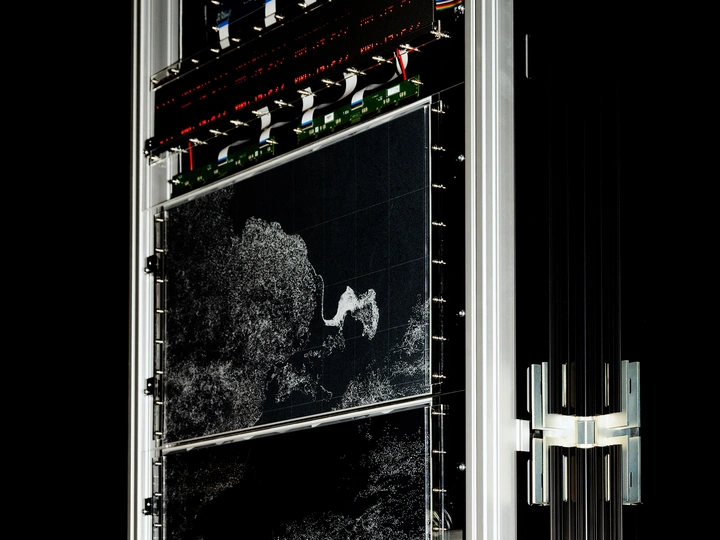PROXY OCEAN

Florian Kilian Jaritz
re–gards is a collaborative for research and action. It addresses both the built and the unbuilt by means of architecture and spatial strategies across various media. Our time at b+ in Berlin and in research positions at ETH Zurich brought us together over a shared interest in expanding architectural practice via inquiry, research, and conversational modes of working. Acknowledging the fragility of current conditions, we investigate human habitats in the context of climate change, related sociocultural challenges, legal frameworks, and built infrastructures.
By combining our expertise in architectural planning and forecasting, speculative design, animation, writing, editing, and curating, we aim to address the urgent issues of our time through diverse means. We believe in acting as mediators and communicators across disciplines.
Florian Kilian Jaritz is an architect and researcher based in Zurich, Switzerland. He holds an MSc from ETH Zurich and a BA from the Berlin University of the Arts. He has worked with architecture practices including b+, Brandlhuber+, David Chipperfield Architects, and TEN, and served as a research assistant at the chairs of Arno Brandlhuber and Alexandre Theriot at ETH Zurich. Florian currently teaches as an academic assistant at the Chair of Adam Caruso at ETH. In 2024, he co-founded re–gards together with Franziska.
Franziska Gödicke is a researcher, architect, and curator based in Zurich, Switzerland. She holds a B.Sc. from Bauhaus-University Weimar and is currently pursuing her M.Sc in Architecture at ETH Zurich. From July 2021 to July 2023 she was as an editor for ARCH+ and freelance architect for brandlhuber+/b+ in Berlin. She was co-curator of the German Pavilion "Open for Maintenance" at the 18th International Architecture Biennale Venice (2023) and is currently a research assistant associated with the chair of Arno Brandlhuber and Silke Langenberg at ETH Zürich. She co-founded re–gards together with Florian in 2024.
“In some instances, the charts are all that remain of the territories, their precise coordinates no longer mapping onto any recognizable part of the world today.”
(Elborough, Brown, Atlas of Vanishing Places, 9.)
The ocean is the climate’s memory, agent, and witness. It registers change in temperature and salinity, acts as a carbon sink, and reveals reshaped coastlines. As the climate shifts, mapping becomes a time-sensitive verb, reliant on real-time data and precise calculation.
Yet the observational tools begin to fail. The shallow reach of LiDAR and the limited connectivity of weather stations can no longer keep pace with climate change. Since 1999, the ARGO programme has deployed approximately 4,000 autonomous buoys across the oceans.
These floats descend to 2,000 metres, drift with currents for ten days, then surface to transmit their findings via satellite. Each cycle contributes to a growing archive, tracing not only ocean circulation but also the submerged outlines of territories that no longer exist.
This inversion of land-centric cartography enables a more intricate reading of what is often seen as a homogeneous blue expanse. Though this data is theoretically open-access, in practice it is interpreted by few. Insurance firms, offshore industries, and military actors—those with resources and infrastructure—monetise uncertainty and weaponise foresight.
Proxy Ocean proposes a more democratic architecture of planetary sensing, placing algorithmic detection alongside local, living knowledge. Energy-efficient E-ink displays, combined with open-source hardware and software, are intended to travel through European coastal communities. Through collaboration with local institutions, sensing and sensibility are no longer seen as mutually exclusive, but as a distributed sensory network—akin to a pencil in the planet's hand, mapping and reshaping its own contours.
Proxy Ocean was funded by and exhibited at the 19th Architecture Biennale Venice.